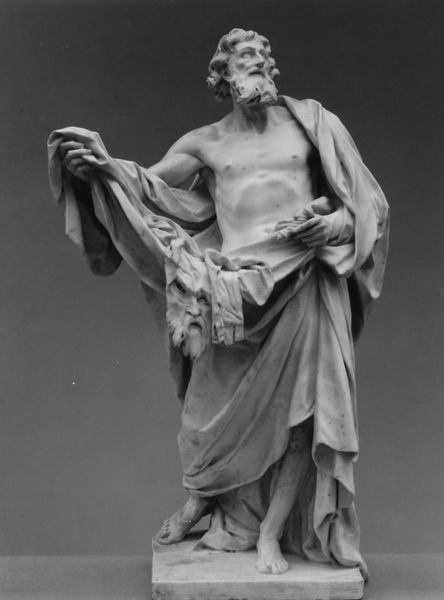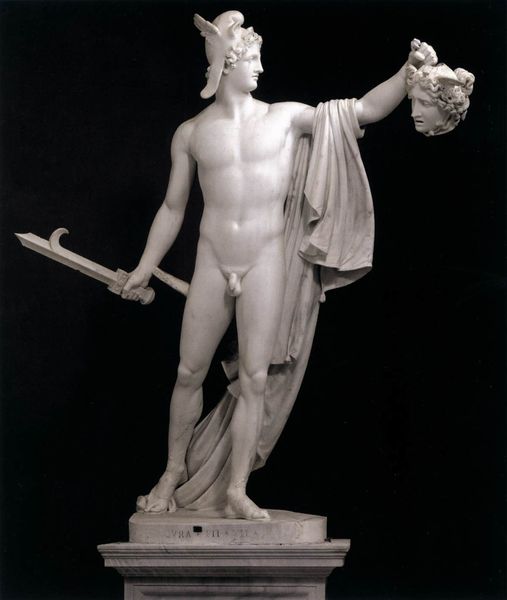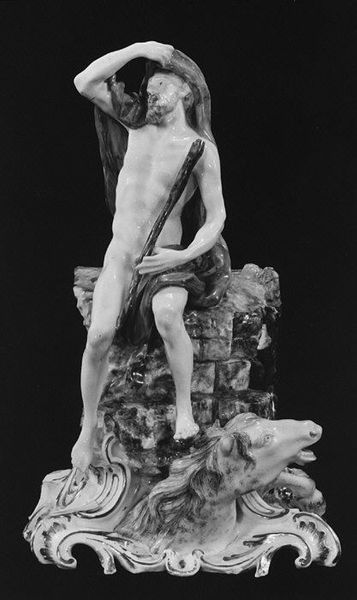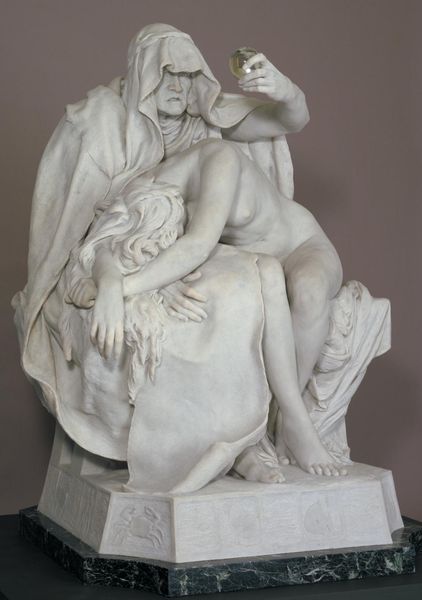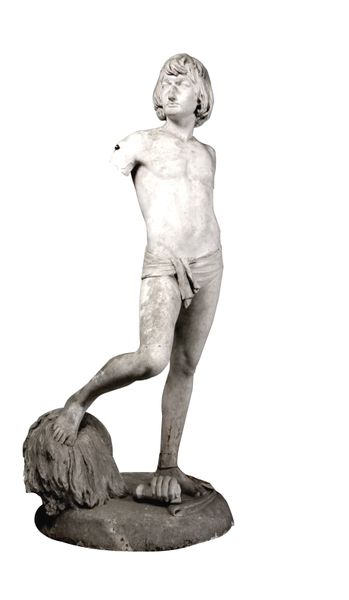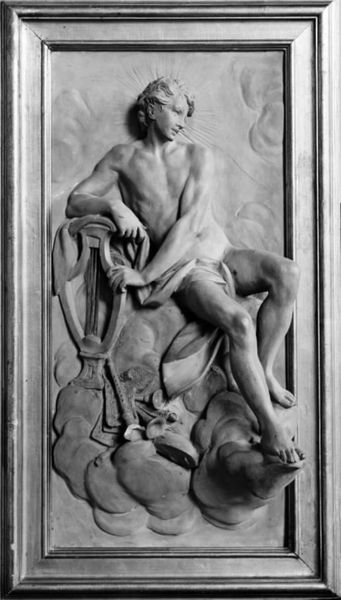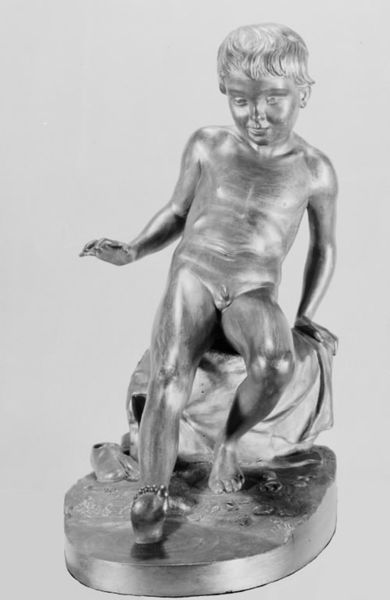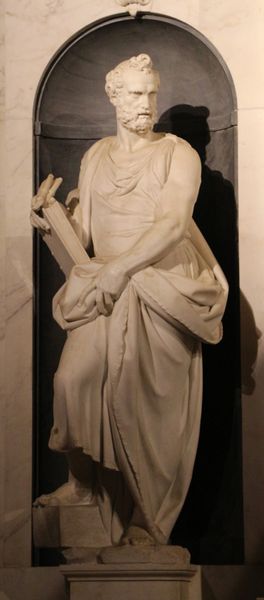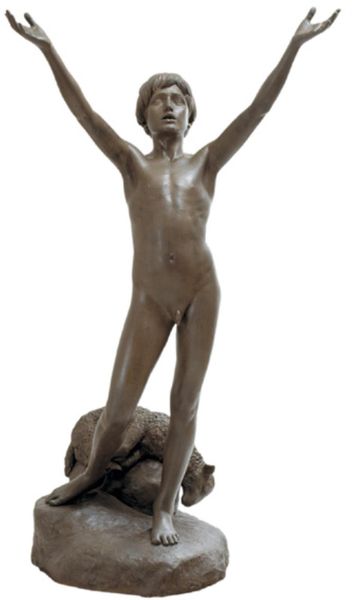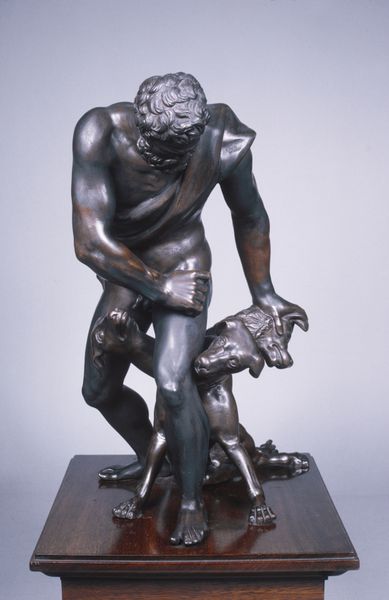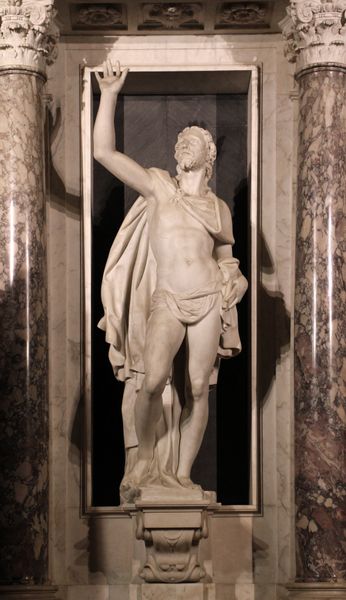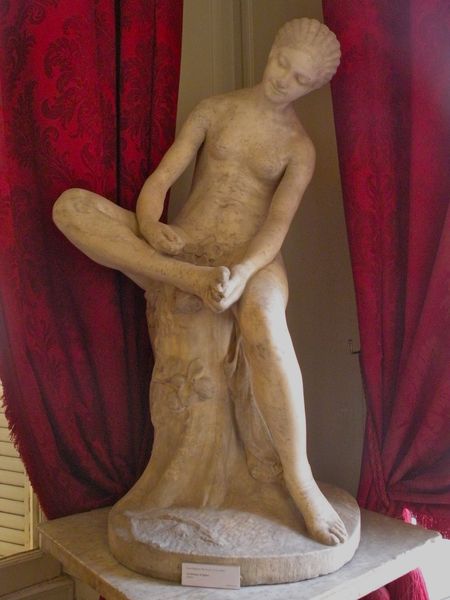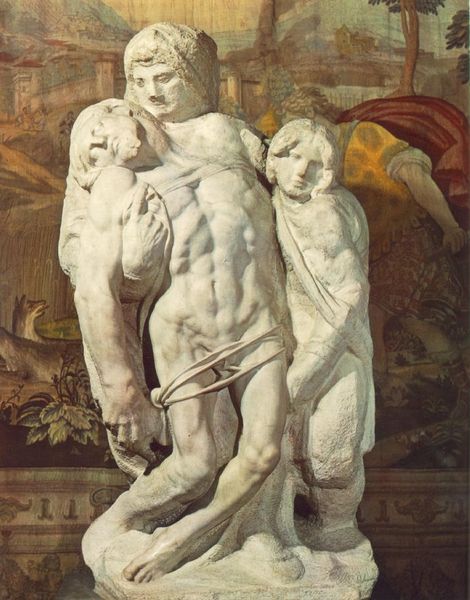
carving, sculpture, marble
#
neoclacissism
#
carving
#
sculpture
#
classical-realism
#
fountain
#
figuration
#
sculpture
#
history-painting
#
marble
#
male-nude
Copyright: Public domain
Editor: Here we have Antonio Canova’s marble sculpture, "Theseus and the Minotaur," from 1783. It's striking how calm Theseus looks, almost contemplative, despite the fact that he is sitting on a dead minotaur. What symbolic elements jump out at you in this work? Curator: It's interesting you noticed that stillness. Canova is tapping into something beyond the immediate victory. Think about the Minotaur. What is it, fundamentally? A monstrous hybrid, a product of unnatural desire, imprisoned in the labyrinth. Theseus isn't just a hero; he represents order and reason conquering the irrational, untamed beast within us all. That resting pose signifies the re-establishment of societal norms. Editor: So, the sculpture is not simply about a mythological battle but also speaks to universal themes about society and the individual? The club behind him... what is the significance? Curator: Precisely. That club… remember, Theseus was known for his physical prowess. However, its blunt simplicity is juxtaposed with the detailed carving of the figures. It stands as a raw, unadorned representation of justice dispensed. Justice can be brutal but necessary for equilibrium. The labyrinth is overcome not through magic or divine intervention, but through human courage and intellect, which informs that choice of weapon. Notice the quiet dignity Canova has instilled into both figures; what does that suggest to you? Editor: It gives a sense of respect to both, that the artist isn't choosing sides, but examining this tension within society. I had never considered all of those underlying factors! Curator: It also connects to a classical ideal, reflecting not just outward beauty, but also inner virtue and its re-establishment, making it such a powerful and enduring image.
Comments
No comments
Be the first to comment and join the conversation on the ultimate creative platform.
